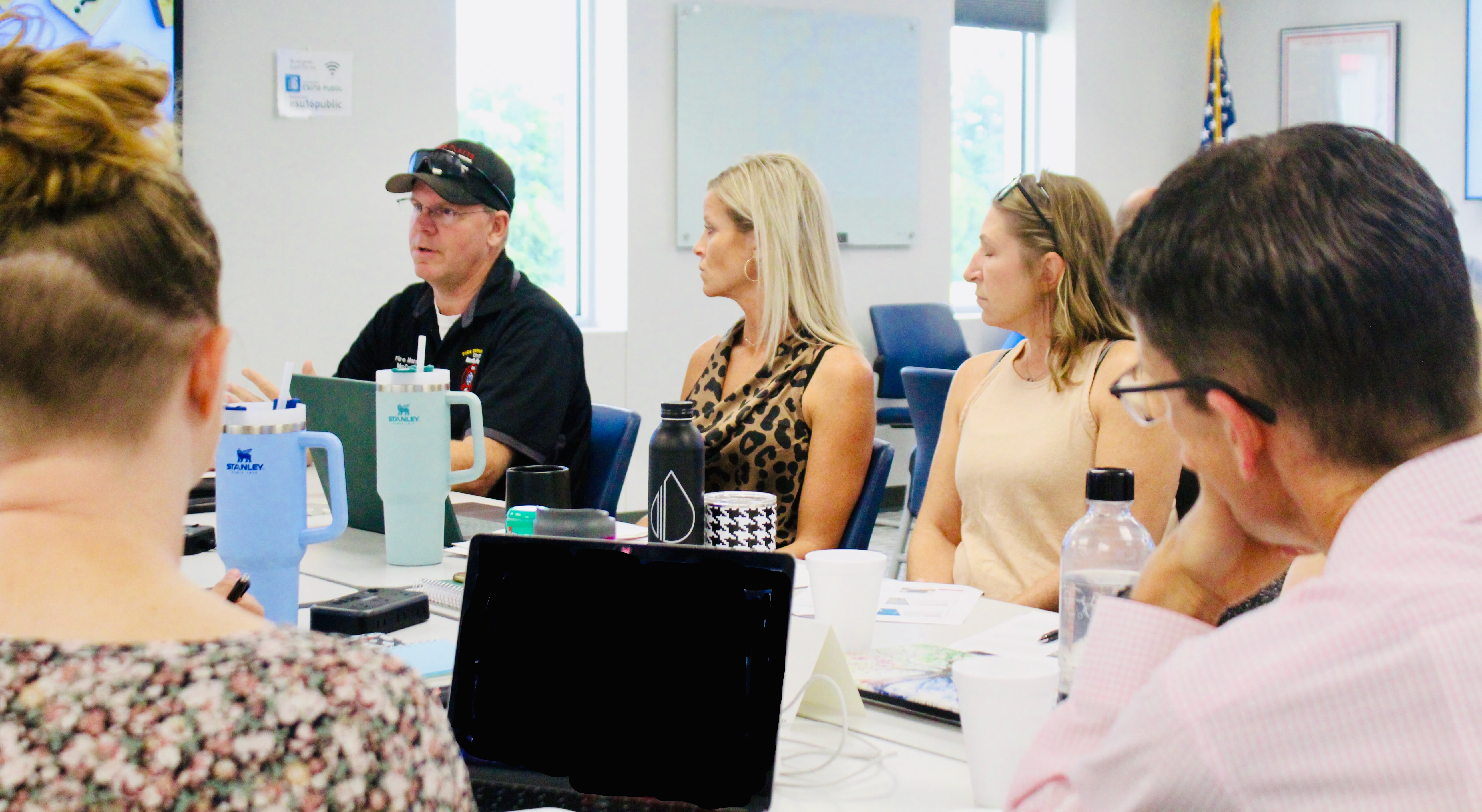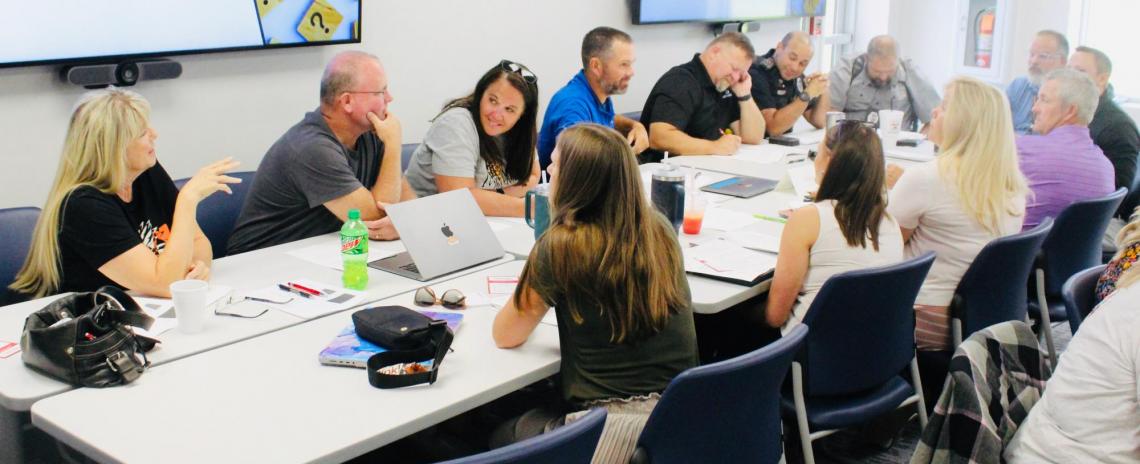Safety training on the brink of “Back to School” season brings districts and first responders together at ESU 16
Safety training on the brink of “Back to School” season brings districts and first responders together at ESU 16
By Tyler Dahlgren
In Nebraska’s ever-evolving quest for the best school safety practices, it has proven beneficial for districts to take a proactive rather than reactive approach.
Why? Well, there’s the obvious answer of preventing things before they happen. Ultimately, that’s the goal, and it has been for decades. Ogallala Public Schools superintendent Gene Russel went even deeper, bridging the obvious with further elaboration.
“Being proactive in this job, in public education right now, means being prepared for the unexpected,” said Russel. “The only way you can ensure that at a high, successful level these days is to be proactive in every facet of education. And the very first facet of all education is to provide a safe and comfortable learning environment for not just students, but for parents.”
Coming off an unprecedented pandemic that took school districts on a whirlwind of a ride, that’s the name of the game in 2023. And for school administrators, it pays to play the game on the tip of your toes.
“When people ask, ‘What is school leadership like these days?’, that’s what we tell people,” Russel continued. “It’s being prepared for the unexpected.”
Which is why Russel, his administrative team and Ogallala-area law enforcement and first responders found themselves seated around a table at ESU 16 last Wednesday, walking through the two hypothetical scenarios created by the University of Nebraska Public Policy Center (NUPPC), who hosted their second in a series of Emergency Operations Planning (EOP) Tabletop Exercises. The exercises are conducted by University of Nebraska Public Policy Center staff, who partners with NDE, the holder of a grant from the US Department of Education specific to emergency operations planning.
“The idea behind this is for schools to go through that initial training with NDE, create their emergency operations plan, and then come to the tabletop exercises to test out that plan to see how it works and what tweaks they might possibly need to make,” said NUPCC senior research manager Dr. Jennifer Farley.
The scenarios are hypothetical, but plausible. NUPPC staff meets with Nebraska school safety and security director Jay Martin and EOP specialist Scott Stemper regularly to formulate the exercises, and the scenarios (Wednesday’s included a bus accident and a bank robbery near a track meet) come from NUPPC research manager Kurt Mantonya, who said the key to effectiveness is wide participation.
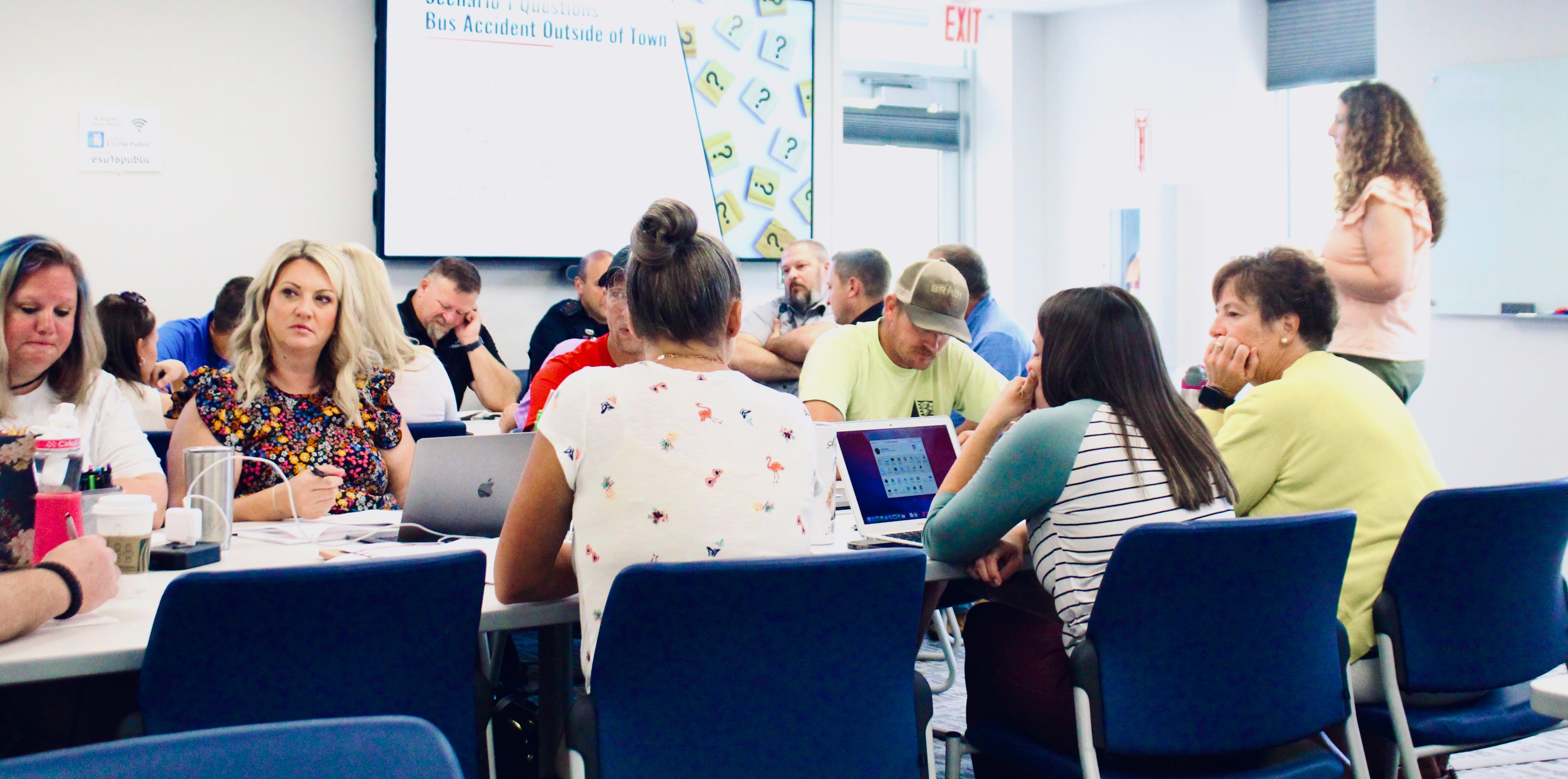
“We don’t want just the schools to be there,” Mantonya said. “We want their emergency managers, their community’s emergency managers, law enforcement, EMS, and other first responders to attend too, because it takes an entire community to be active in your emergency operations planning.”
They were all there last Wednesday in a packed ESU 16 conference room. For three hours, sheriffs, police officers and firefighters participated in the exercise along with superintendents and principals and school counselors.
“That was really beneficial for us,” said Russel. “Because in rural Nebraska, their kids walk down the same hallways as my kids do. Their kids go to school here, and my kids go to school here. There’s not just a great professional relationship, but a personal one, too. They want to know they can confidently send their children to school every day. We’re going to do everything we can to make sure that every student is safe.”
They hit the mark last Wednesday. The room was engaged throughout. Farley and her team felt the energy. For them, it was invigorating. That’s one of the perks of in-person exercises, though the team holds virtual sessions throughout the year as well.
“Any time we see lots of discussion, lots of energy in the room, we kind of know we’ve hit the mark,” Farley said. “They were really going through the exercise as a team, addressing situations that feel relative to them, and, ultimately, we just hope it’s helpful.”
Insight from first responders and law enforcement is invaluable, Farley explained. Their presence ties the training together. The format is strategically cohesive, and, therefore, productive.
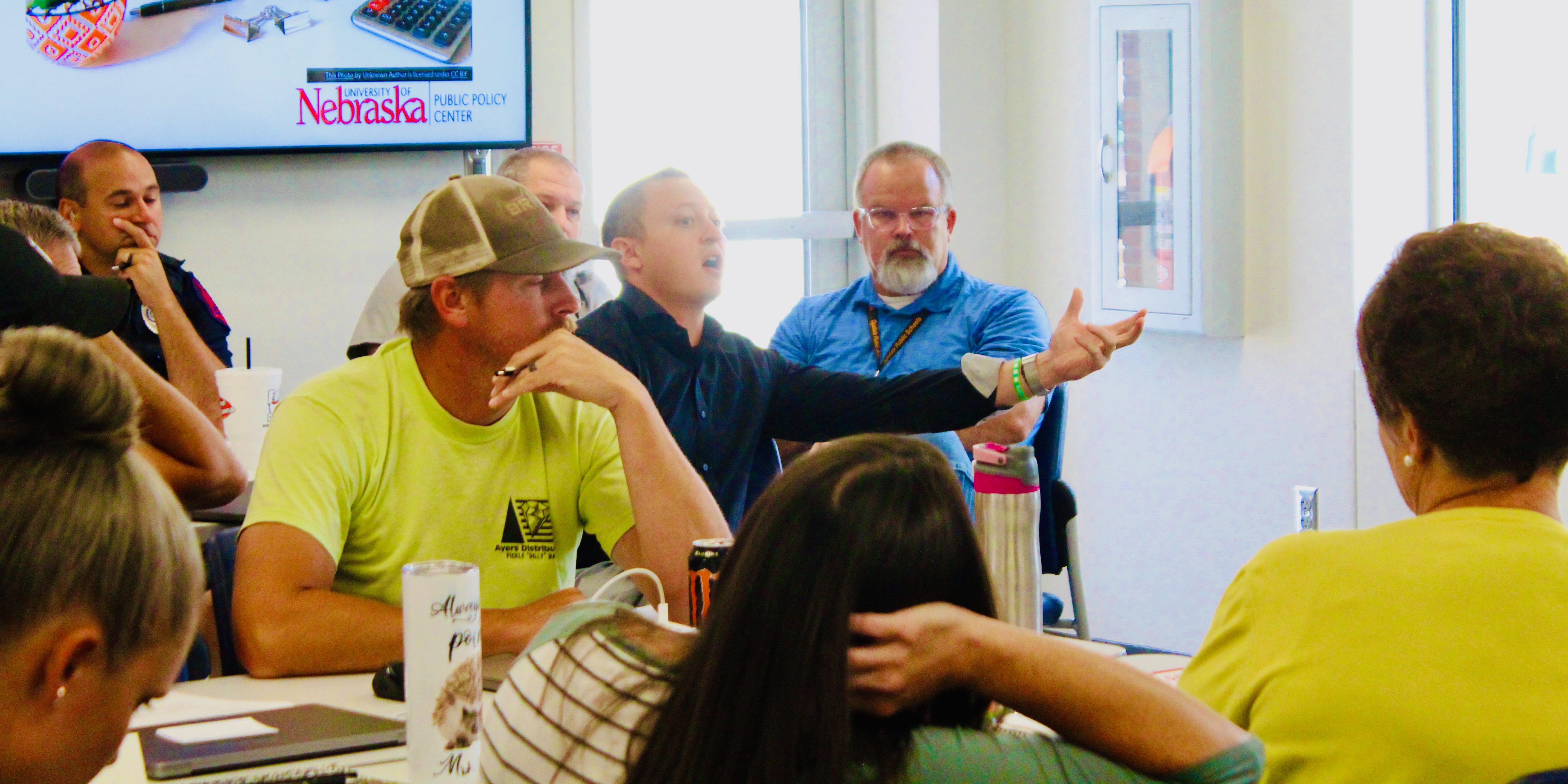
“Having those first responder voices is huge,” Farley said. “Sitting through a tabletop like this with some facilitated questions is really an opportunity for them to engage with each other in crucial dialogues about ‘What would really happen if a tornado touches down near a school? Who is in charge until the EMSs or the sheriff gets there, and then what?’”
In the end, the exercises help to build trust, Mantonya said. Trust between agencies, organizations and communities. In this part of Nebraska, that trust, once established, is rock solid.
“There is a unique collaboration in our area, and some of that is out of necessity given the distance between one school district and the next,” said ESU 16 administrator James McGown, whose staff not only hosted but also participated in the exercise. “Some might call it isolation, but there is more collaboration and a great sense of teamwork among individuals. Having law enforcement and first responders here enhanced the experience for us.”
Russel is a big proponent of communication. OPS has a parental advisory team and a superintendent’s advisory team, and there’s an understanding among the entire staff that no one’s been injured behind a locked door. Time spent around a table with Ogallala first responders wasn’t just time well spent; it was indispensable.
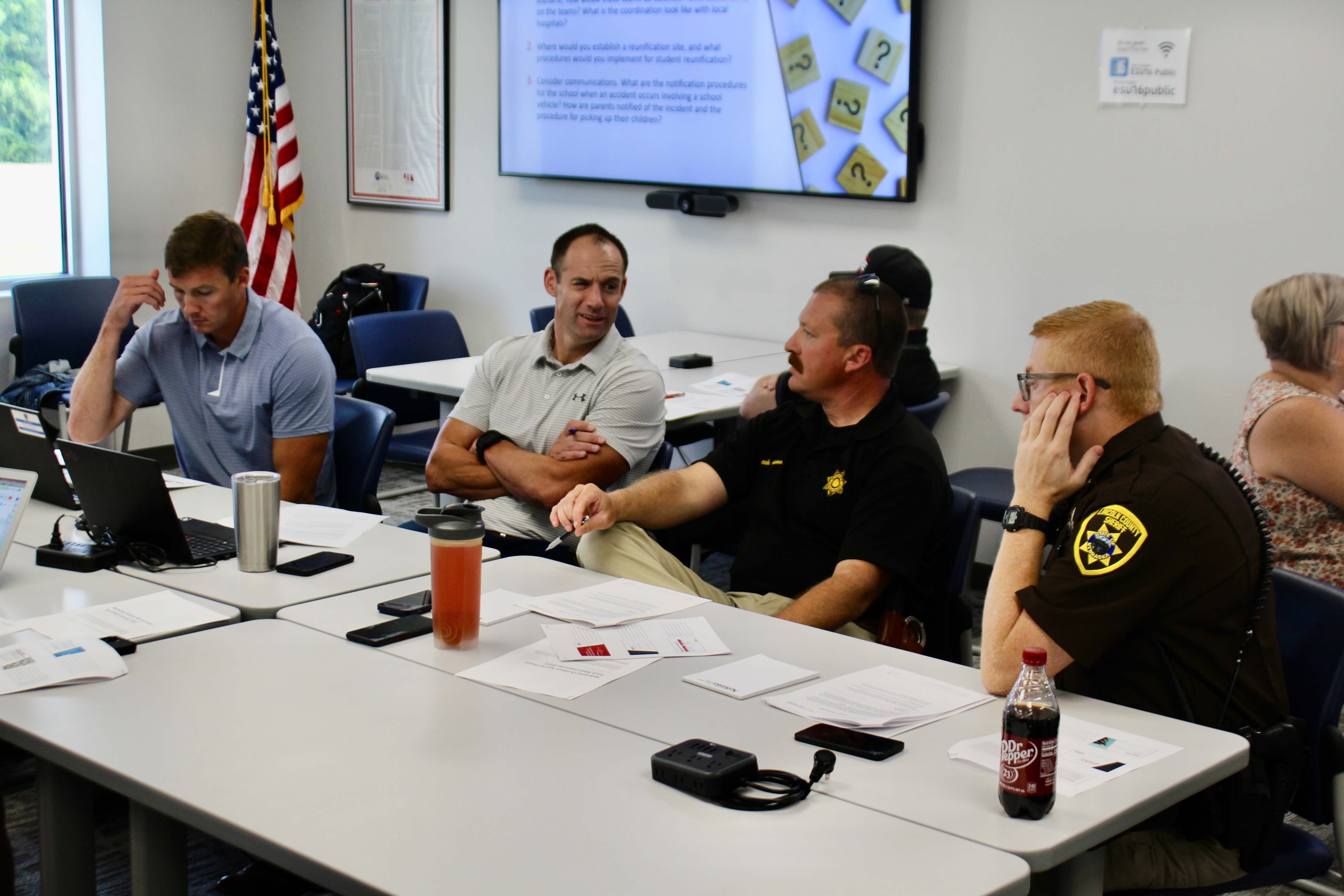
“Hearing our local police department’s language, the fire department’s language and the emergency manager’s language and sharing our language and seeing how it all meshes was really beneficial,” he explained. “This just helped strengthen those relationships and the understanding of how they approach situations. It was great having everyone in the same room and knowing that we’re on the same team.”
Partnering with ESUs as host sites made perfect sense, said Farley. The first EOP tabletop exercise was held at ESU 2 in Fremont. Farley’s team plans to hold another training session before the end of the year. For ESU 16, serving as host was a no-brainer.
“Any time we can provide training in our area of that quality and magnitude and of significant importance, we’re going to jump at those opportunities,” said McGown. “It was evident that this was something that was needed, as a good majority of our ESU 16 school districts participated. I was pleased with the turnout and the information that was provided. It was very quality training.”
It’s back to school season, and though that comes with school clothes shopping, class schedule swapping and plenty of other fun, there’s a lot of work being done on the other end to ensure students have the best school year possible.
“There’s a lot on the shoulders of schools,” said Farley. “They have a big job. If we can support them in this work, we’re happy to do it.”
